Exploring Light Sheet Microscopy: Innovations & Uses

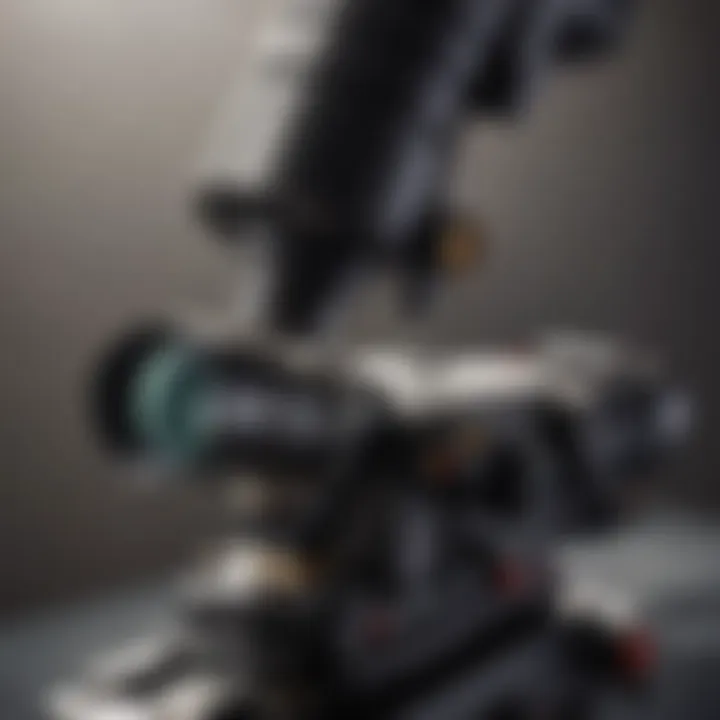
Intro
Light sheet microscopy represents a significant advancement in imaging techniques, enabling researchers to visualize biological samples with unprecedented clarity and detail. This technology differs fundamentally from traditional methods like confocal microscopy by using a plane of light to illuminate the specimen, resulting in less phototoxicity and faster image acquisition. As a result, researchers can examine living tissues for extended periods without causing harm, opening new avenues in cellular and molecular biology.
The intricacies of light sheet microscopy lie in its dual advantages of high resolution and minimal sample disruption. This makes it a valuable tool in various scientific fields, from developmental biology to materials science. The synergy between technological innovation and its practical applications underscores the relevance of light sheet microscopy in current research, while addressing the complexities encountered in real-world environments.
Research Overview
The impact of light sheet microscopy extends across numerous branches of science. Understanding its methodological approaches helps establish its significance in providing reliable data for diverse research applications.
Methodological Approaches
Light sheet microscopy employs sophisticated imaging techniques to achieve rapid and high-resolution images. The fundamental method involves illuminating the sample with a thin sheet of light, which reduces the volume of the specimen exposed to light at any given time. This selective focus minimizes damage and photobleaching, enabling longer observation times. The versatility of this approach allows for the use of different imaging modalities such as structured illumination and single-molecule detection. Researchers can adapt the technique based on specific experimental needs, leading to the development of custom light sheet setups tailored to particular studies.
- Selectivity: Choosing what part of the sample to illuminate.
- Speed: Quickly acquiring images leads to higher temporal resolution.
- Adaptive Modifications: Techniques can be adjusted depending on the sample's characteristics.
Significance and Implications
The implications of light sheet microscopy reach far beyond simple image acquisition. It significantly enhances the understanding of dynamic biological processes, such as embryonic development and cellular behaviors during disease progression. Moreover, the ability to image whole organisms in real-time provides insights that were previously unattainable. This capability has profound implications for fields like regenerative medicine, cancer research, and neurobiology, giving scientists critical insights into biological phenomena.
In addition, the challenges faced in the practical implementation of this microscopy technique, such as optimizing light intensity and minimizing scattering, spur further technological advancements. Thus, light sheet microscopy stands at the crossroads of innovation and application, constantly evolving to meet the demands of modern science.
Current Trends in Science
In recent times, light sheet microscopy has seen a surge in its adoption across various research domains. The development of novel techniques continues to enhance its functionality and application scope, marking its integration into routine use in many labs.
Innovative Techniques and Tools
Recent innovations include advanced computational methods to improve image quality and processing speed. Technologies such as deep learning algorithms analyze vast arrays of image data, bringing forth powerful insights from complex biological systems. Additionally, professionals are increasingly developing multi-view light sheet methods aimed at improving resolution and depth of imaging.
Interdisciplinary Connections
Light sheet microscopy's impact is profound, influencing not just biology but also materials science, nanotechnology, and even physics. The ability to visualize dynamic processes provides a common framework for researchers in various fields. This interdisciplinary nature has fostered collaborations that enhance overall scientific progress, making it a cornerstone technique in contemporary research.
"Light sheet microscopy sheds light on processes that drive biological development and material properties, fundamentally changing how researchers approach inquiry in these fields."
Preface to Light Sheet Microscopy
Light sheet microscopy represents a significant advancement in imaging techniques that has transformed how researchers visualize biological specimens and materials at microscopic levels. Understanding this technique is essential for students, educators, and professionals involved in scientific research, as it provides insights into how light interacts with samples in a unique way.
This section aims to explore the foundational elements of light sheet microscopy, outlining its historical significance and defining characteristics. The importance of this microscope lies in its ability to generate high-resolution images with minimal photodamage, thereby enabling detailed observation of dynamic processes in live cells and organisms. Moreover, light sheet microscopy facilitates three-dimensional imaging, which is a crucial factor in contemporary biological research, offering clarity that traditional methods often fail to provide.
Historical Context
The origins of light sheet microscopy date back to the early 20th century when the concept of selective illumination gained momentum. Pioneering work by researchers in optics and imaging helped shape the framework of this technology. The development of the first functional light sheet microscope was achieved in the 1990s, when researchers began harnessing laser technologies to illuminate samples. Significant contributions were made by Eric Betzig and his colleagues, which eventually led to various iterations being adopted in laboratories worldwide.
Over time, the technique has evolved, integrating advanced electronics and imaging software that enhanced the visualization process. Notably, the introduction of more sophisticated detection methods allowed scientists to achieve greater imaging depths and resolutions. As biological research demanded more precise instruments for studying complex living systems, light sheet microscopy emerged as a favorable alternative to traditional fluorescence microscopy, which often suffers from high levels of phototoxicity and image degradation.
Defining Light Sheet Microscopy
Light sheet microscopy, also referred to as selective plane illumination microscopy, is characterized by its method of closely illuminating a thin slice of a specimen at any given moment. This technique illuminates only a small part of the sample, meaning that the majority of the specimen remains unstimulated, which leads to reduced photo-induced damage and allows for prolonged observation times of living organisms or cells.
This method typically involves the use of two primary components: a light source, often a laser, and a detection system, such as a sensitive camera or microscope objective. The laser generates a light sheet by passing through a cylindrical lens, creating a two-dimensional illumination plane. Simultaneously, the emission from the sample is captured at right angles to the light sheet, resulting in high-contrast and high-resolution images.
Through its distinct principles and operational efficiencies, light sheet microscopy has paved the way for extensive applications in both biological and material sciences. As we explore this technology further, understanding its mechanisms and applications is critical to fully appreciate the innovations it has brought to the scientific community.
Principles of Light Sheet Microscopy
Understanding the principles of light sheet microscopy is crucial to appreciate its role in modern scientific research. This section discusses the optical setups, illumination techniques, and detection mechanisms that together define this unique imaging modality. These principles not only highlight how light sheet microscopy achieves high-quality images but also reveal its numerous advantages, such as reduced phototoxicity and enhanced temporal resolution. Each component is interlinked, contributing to the overall efficiency and performance of this microscopy technique.
The Optical Setup
The optical setup of light sheet microscopy is designed to illuminate the sample from the side, creating a thin plane of light. This configuration minimizes the volume of illuminated tissue, thereby reducing photodamage to the sample. The components typically include a laser light source, beam-splitting optics, and objective lenses.
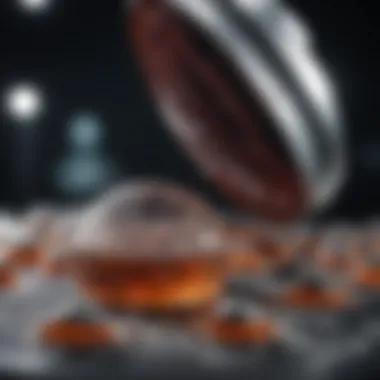
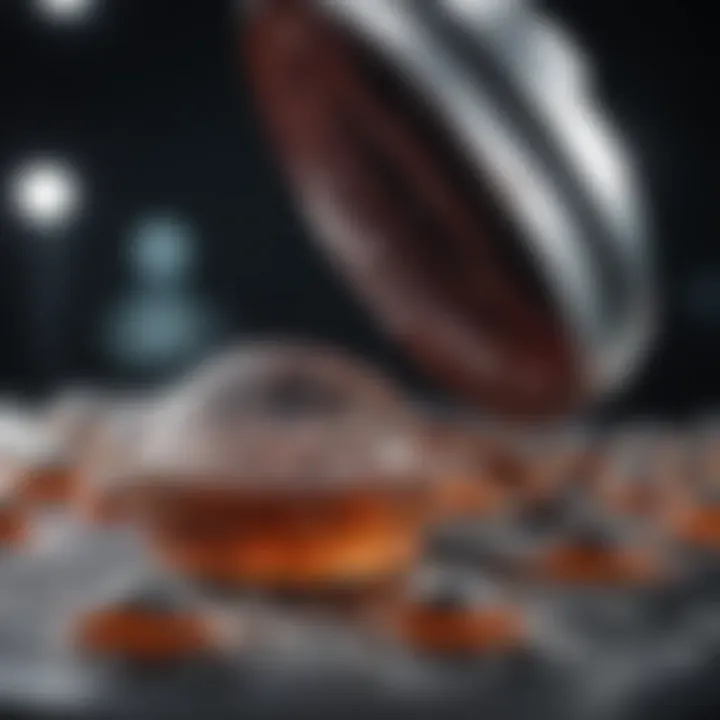
The use of laser light is significant in ensuring coherent and focused illumination. This coherence allows for precise targeting of the light sheet, which is a crucial factor that distinguishes this technique from traditional microscopy methods. The alignment and positioning of these elements are vital for optimizing image quality and reducing background noise. The simplicity and efficiency of the setup make it a preferred choice in many labs, particularly where delicate biological samples are involved.
Illumination Techniques
Illumination techniques in light sheet microscopy are fundamental to its imaging capabilities. These methods include the creation of uniform light sheets and advanced spatial resolution techniques.
Uniformity
Uniformity in the light sheet is vital for consistent illumination across the sample area. A uniform light sheet enhances the quality of the acquired images by ensuring that all regions of the sample receive even lighting. This reduces artifacts and improves the overall image clarity.
It is a beneficial choice for detailed imaging studies, especially in developmental biology where precision matters. The unique feature of achieving uniformity is the ability to manipulate laser parameters, allowing researchers to tailor the illumination to their specific needs. The main advantage here is that it directly affects data reliability and reproducibility.
Spatial Resolution
Spatial resolution refers to the ability to distinguish small details within the sample. In light sheet microscopy, achieving high spatial resolution is essential for observing intricate cellular structures. The optical configuration allows for precise adjustments to focus the light sheet, enhancing detail visibility.
High spatial resolution is particularly beneficial in applications like neuroscience and developmental biology where small features need to be studied. However, there is a trade-off. As spatial resolution increases, the imaging depth can be affected, limiting the ability to image thicker specimens.
Detection Mechanisms
Detection mechanisms are crucial for capturing the light emitted from the sample. This involves sophisticated camera technologies and image processing techniques.
Camera Technologies
Camera technologies in light sheet microscopy are integral for detecting the fluorescence emitted by the sample. A variety of camera options exist, including scientific CMOS and sCMOS cameras. These technologies provide high speed and low noise, enabling real-time imaging of dynamic processes.
The main characteristic of these cameras is their sensitivity, allowing for the detection of low-light signals. They are beneficial as they enable fast data acquisition, making long-term imaging studies feasible. However, the performance can vary based on specific laboratory needs and budgets.
Image Processing
Image processing techniques play a significant role in enhancing the quality of the captured images. This involves algorithms that correct for aberrations, enhance contrast, and perform 3D reconstructions. High-quality image processing is essential especially when dealing with complex datasets collected from light sheet microscopy.
The ability to manipulate and enhance images post-capture allows researchers to extract more information from their data. Nonetheless, there is a learning curve associated with advanced image processing tools, which can be a barrier for some users.
In summary, the principles of light sheet microscopy encompass a range of sophisticated optical setups, illumination techniques, and detection mechanisms that collectively enhance research capabilities across biological and material sciences.
Advantages of Light Sheet Microscopy
The advantages of light sheet microscopy are significant in the context of this article. Understanding these advantages is critical because they position light sheet microscopy as a preferred imaging technique in both biological and material sciences. Researchers prioritize these benefits when selecting imaging strategies for experiments. This section will delve into three primary advantages: reduced phototoxicity, enhanced temporal resolution, and three-dimensional imaging capabilities. Together, they underscore why light sheet microscopy has become an essential tool in modern research laboratories.
Reduced Phototoxicity
One of the foremost benefits of light sheet microscopy is its ability to minimize phototoxicity to samples. Traditional microscopy methods, like confocal microscopy, often utilize continuous illumination. This can lead to significant damage to biological specimens, especially when observing live cells. In contrast, light sheet microscopy employs a unique illumination strategy that focuses light in a sheet-like manner. By illuminating only the plane of interest, the exposure of the entire sample to light is significantly reduced.
This technique equates to less inadvertent light-induced damage which is crucial when studying sensitive biological processes. For researchers observing live embryos or neurons, reduced phototoxicity enables longer observation times and the opportunity to capture dynamic processes in real time. The importance of this feature cannot be overstated; by preserving the integrity of the sample, researchers can obtain more accurate data from their observations.
Enhanced Temporal Resolution
Another key advantage of light sheet microscopy is its enhanced temporal resolution. Temporal resolution refers to the capability to capture events occurring over time. With the ability to rapidly scan the sample, light sheet microscopy enables researchers to gather images at high speeds. This is particularly advantageous for time-lapse imaging, where events happen quickly.
For example, in developmental biology, observing the rapid division of cells or migration patterns can be critical. Enhanced temporal resolution allows for a detailed analysis of these processes, providing insights into developmental patterns or disease progression. The flexibility in capturing time points helps researchers make more informed conclusions about the dynamics of biological systems.
Three-Dimensional Imaging Capabilities
Light sheet microscopy excels in providing three-dimensional imaging capabilities, which is another notable advantage. Traditional microscopy methods may struggle to visualize complex structures fully. However, the nature of light sheet microscopy allows it to capture images from multiple angles of the sample, creating a comprehensive three-dimensional representation with ease.
This is crucial in areas such as neuroscience, where understanding the spatial organization of neural networks often requires precise three-dimensional imaging. Through 3D reconstructions, researchers can examine intricate structures that might otherwise be obscured in traditional imaging techniques. The ability to visualize three-dimensional arrangements enhances comprehension of the biological processes being studied.
"Light sheet microscopy has revolutionized how we visualize biological processes in three dimensions without compromising sample integrity."
In summary, these advantages—reduced phototoxicity, enhanced temporal resolution, and three-dimensional imaging capabilities—position light sheet microscopy as a powerful tool across various scientific disciplines. By effectively addressing challenges found in traditional microscopy, this technique not only enriches data collection but also empowers researchers to explore new frontiers in their investigations.
Applications in Biological Research


Light sheet microscopy has become a crucial tool in biological research, enabling scientists to visualize complex biological processes in real-time without causing significant damage to living samples. This technique allows for high-resolution imaging while maintaining sample viability, making it particularly valuable for developmental biology, neuroscience, and cellular dynamics.
The following subsections will delve into how light sheet microscopy enhances research across these critical areas, providing insights into its specific benefits and practical considerations.
Developmental Biology
In developmental biology, researchers aim to understand how organisms grow and develop from embryos to adults. Light sheet microscopy plays a pivotal role here, offering three-dimensional imaging that captures developmental stages in detail. Unlike traditional microscopy methods, which often require tedious sample preparation, light sheet microscopy allows for imaging of live embryos with minimal interference.
Notably, this technique can visualize multicellular dynamics, providing insights into cellular interactions during embryonic development. It enables the observation of processes like cell migration and differentiation in real-time, allowing for more accurate conclusions about developmental mechanisms.
“The ability to observe developing organisms in vivo has transformed developmental biology, presenting new avenues for understanding morphogenesis.”
Neuroscience
Neuroscience research benefits greatly from light sheet microscopy’s capacity for high-speed imaging and low phototoxicity. Understanding how neural circuits function requires a fine-scale view of neuronal activity and morphology. With light sheet microscopy, researchers can image large volumes of brain tissue over extended periods.
This aspect is particularly important when studying dynamic processes such as neuronal growth, synapse formation, and the effects of various stimuli on neural activity. The illumination technique facilitates imaging through opaque tissues, which is particularly relevant when exploring brain structures that are otherwise challenging to visualize.
Moreover, researchers can combine light sheet microscopy with genetic tools to label specific neuron types, allowing targeted studies of neuronal behavior in live models.
Cellular Dynamics
In the realm of cellular dynamics, light sheet microscopy opens vast horizons for observing how cells respond to different stimuli and interact with one another. The ability to visualize living cells over time allows researchers to capture processes such as cell migration, division, and apoptosis.
Understanding these cellular events is essential for grasping the underlying mechanisms of diseases such as cancer or infections. Light sheet microscopy provides the resolution needed to observe subcellular structures and changes during these dynamic processes, offering a level of insight not easily achievable with other microscopy techniques.
Furthermore, its capability to perform multi-color imaging enables concurrent observation of various cellular components, enhancing the understanding of complex cellular behaviors.
Applications in Material Sciences
Light sheet microscopy has emerged as a powerful technique in material sciences, providing unique insights into complex structures and dynamics. This method is particularly valuable for studying materials at various scales, from the microscopic to the nanoscale. Its ability to obtain high-resolution images with reduced phototoxicity makes it suitable for investigating delicate samples, such as thin films and other complex materials.
The advantages of employing light sheet microscopy in material sciences include enhanced three-dimensional imaging, which allows researchers to visualize internal structures and how they evolve over time. This capability is crucial in fields such as nanotechnology and fiber optics, where understanding the material's properties and behavior can lead to significant advancements.
Additionally, light sheet microscopy can be integrated with other imaging techniques, providing a multi-modal approach to studying materials. This integration expands the scope of experimental possibilities, enabling researchers to correlate light sheet data with other functional information about the materials being examined.
"The versatility of light sheet microscopy in material sciences not only improves imaging quality but also accelerates the pace of material discovery and characterization."
Moreover, the technique facilitates the real-time observation of material processes, contributing to a deeper understanding of phenomena such as phase transitions and material degradation. Thus, its relevance cannot be overstated, as it continues to drive innovation within the field.
Nanotechnology
Nanotechnology leverages the unique properties of materials at the nanoscale, and light sheet microscopy plays a vital role in exploring these characteristics. This microscopy method allows for the analysis of nanostructured materials without the need for extensive sample preparation, which can alter their properties. The capacity for non-invasive imaging is particularly beneficial when studying sensitive nanomaterials or biological substrates modified to function at the nanoscale.
With the resolution capabilities of light sheet microscopy, it is possible to observe the arrangement of nanoparticles, structures, and the interactions between different materials. This insight is essential in optimizing the fabrication processes and understanding how nano-scale structures influence the macroscopic properties of materials.
Key benefits of applying light sheet microscopy in nanotechnology include:
- High temporal resolution that captures dynamic processes as they occur.
- Reduced photodamage, preserving the integrity of sensitive samples.
- Three-dimensional imaging, providing a holistic view of the nano-architectures and their functions.
Fiber Optics Research
In fiber optics research, light sheet microscopy enables the detailed examination of optical fibers during manufacturing and performance testing. This approach allows scientists to visualize defects, coatings, and the overall integrity of the fiber optical systems. By capturing images in three dimensions, researchers can analyze how light propagates through these materials and assess their efficiency under various conditions.
Furthermore, light sheet microscopy contributes significantly to the development of next-generation optical fibers, which are crucial for high-speed data transmission. The enhanced imaging quality helps in understanding how different fiber designs affect optical performance, enabling improvements in both design and material selection.
Key applications of light sheet microscopy in fiber optics research include:
- Analyzing light transmission through fiber structures.
- Inspecting the interfaces of multiple material layers within fiber optics.
- Observing the effects of bending and stretching on light propagation.
By addressing these aspects, light sheet microscopy greatly enhances the understanding of fiber optics technology and aids in the development of more efficient communication networks.
Challenges in Light Sheet Microscopy
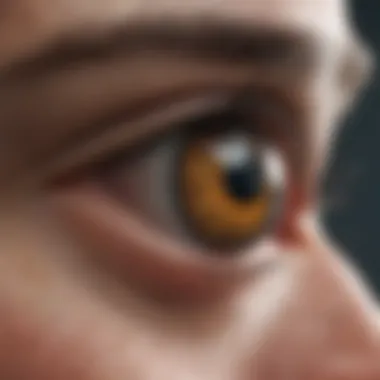
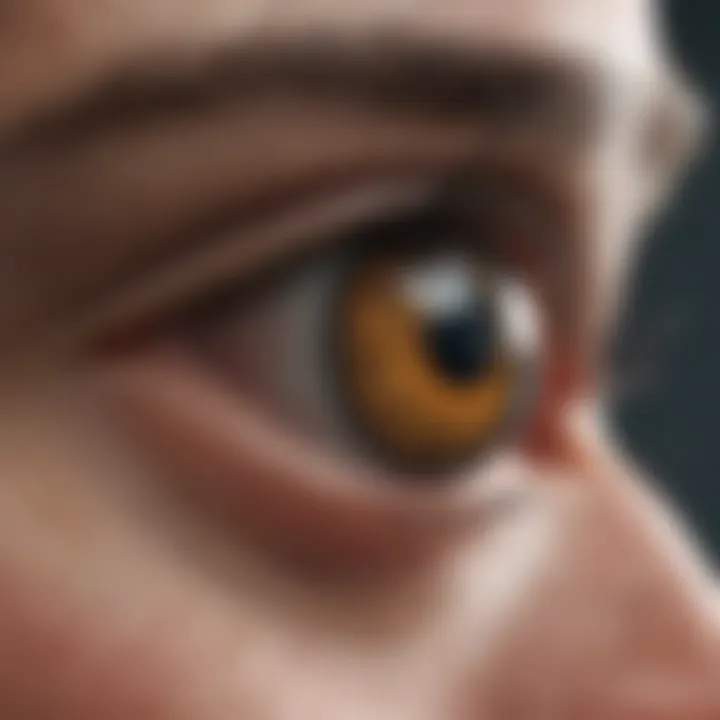
Light sheet microscopy, while innovative and effective, is not without its challenges. A thorough understanding of these obstacles is essential for researchers looking to optimize their use of this technique. Addressing these challenges not only improves the efficiency of light sheet microscopy but also expands its application scope. The three major hurdles include limitations of imaging depth, sample preparation issues, and cost and accessibility concerns.
Limitations of Imaging Depth
One significant constraint in light sheet microscopy is the limitation in imaging depth. The illumination provided by the light sheet does not penetrate tissue as effectively as other microscopy methods, such as confocal or two-photon microscopy. This can significantly affect the ability to visualize structures that are present deep within a sample.
Researchers often encounter challenges when trying to image thick samples. The light may scatter before reaching deeper layers, resulting in images that lack detail or clarity. Additionally, the optical properties of biological tissues can vary considerably due to differences in refractive index. These factors can distort the image quality, making it difficult to analyze the morphology and dynamics of structures at greater depths.
Sample Preparation Issues
Sample preparation is another crucial factor influencing the success of light sheet microscopy. Proper preparation is imperative, as the imaging technique typically requires transparency of biological samples. Tissues often need to be cleared or modified to minimize scattering. This can be a time-consuming process and may lead to artifacts if not conducted carefully.
Moreover, certain fixation and staining procedures can alter the morphology of the cells or tissues being studied. This alteration may result in potential misinterpretations if the samples are not handled appropriately. Finding a balance between effective sample preparation and maintaining structural integrity is essential for producing reliable results in light sheet microscopy.
Cost and Accessibility
The cost of light sheet microscopes represents a significant barrier to their widespread use in research and education. These instruments are typically complex, featuring advanced technologies that require significant investment. Smaller laboratories or educational institutions may find it challenging to secure funding for such equipment.
Moreover, accessibility extends beyond just the financial aspect. The expertise and training required to operate light sheet microscopes effectively is often not readily available. Users need to have a strong understanding of the technology and its principles, which adds another layer of complexity.
In summary, while light sheet microscopy offers many advantages, it also presents notable challenges. Understanding these obstacles is vital for researchers who wish to fully leverage the technology in their work. Addressing depth limitations, refining sample preparation techniques, and considering financial accessibility can significantly enhance the practical applications of light sheet microscopy.
Future Directions in Light Sheet Microscopy
The field of light sheet microscopy stands at a critical juncture where ongoing innovations and new methodologies are poised to reshape its landscape. Future directions will heavily focus on enhancing the capabilities of existing technologies while exploring various interdisciplinary applications. This section outlines precisely how these innovations, collaborations, and expanded applications could unfold, offering significant benefits to both biological and material sciences.
Innovations in Technology
Technological advancements are often the backbone of research methodologies. In light sheet microscopy, innovations are being driven by increased imaging speed and improved optical resolution. New camera technologies, such as sCMOS and EMCCD, allow for greater frame rates and sensitivity, enabling researchers to capture fast-moving biological processes in high detail. Additionally, the development of advanced light sources, including lasers with higher efficiency and tunability, enhances image quality and reduces photobleaching.
Modern computational techniques like machine learning and AI can further polish data acquisition and processing. These algorithms assist in noise reduction and enhance image reconstruction, ultimately improving the accuracy of three-dimensional imaging. By adopting new software platforms that integrate various imaging modalities, researchers will have better tools for analyzing complex datasets.
Interdisciplinary Collaborations
Collaboration across disciplines can drive innovative applications of light sheet microscopy. By engaging with fields such as materials science, bioengineering, and computation, researchers can leverage shared knowledge and resources to tackle complex problems. For example, combining light sheet microscopy with techniques from nanotechnology may yield new insights into materials at the nanoscale, which is unusually challenging for traditional imaging methods.
Moreover, working alongside computational scientists allows for the development of more sophisticated algorithms to analyze imaging data from diverse contexts, which could lead to groundbreaking discoveries. Institutions that promote interdisciplinary partnerships may see significant advancements as they cultivate a rich environment for intellectual exchange.
Expanding Application Scope
The scope of light sheet microscopy applications is broadening considerably. While biological research played a foundational role, emerging fields are revealing new opportunities. For instance, applications in soft matter physics could lead to breakthroughs in understanding the dynamics of complex fluids. Similarly, efforts to study plant biology through light sheet microscopy can provide insights into issues like nutrient transport and stress responses at a cellular level.
In material sciences, researchers are exploring non-invasive techniques to assess the structure and properties of advanced materials, such as those used in electronic devices and renewable energy systems. As light sheet microscopy continues to evolve, it is evident that its potential is extensive, suggesting promising paths for future exploration.
"The future of light sheet microscopy lies not just in new technologies, but in the collaborative spirit of interrelated scientific communities."
In summary, the future directions in light sheet microscopy point toward a convergence of technology, collaboration, and expanded applications. The potential for this approach to catalyze breakthroughs in both established and novel fields illustrates the profound impact it can have in the years to come.
End
The conclusion serves as a vital part of this article, summarizing the intricate discussions related to light sheet microscopy. By recognizing the advances in technology and applications, as well as the challenges faced, readers can appreciate the profound impact of this imaging technique in both biological and material sciences. Light sheet microscopy not only enhances imaging capabilities but also encourages ongoing research in various fields, tapping into possibilities that were once deemed unattainable.
Summing Up Key Insights
In this article, several key insights have emerged regarding light sheet microscopy:
- Technological Advances: The development of light sheet microscopy has ushered in enhanced imaging techniques, leading to reduced phototoxicity and improved temporal resolution.
- Research Applications: This imaging modality is actively employed in developmental biology, neuroscience, and increasingly in cellular dynamics, allowing researchers to visualize processes with unprecedented clarity.
- Challenges Identified: Despite its advantages, barriers such as limitations in imaging depth and sample preparation issues are persistent.
The integration of these points deepens our understanding of how light sheet microscopy has transformed research methodologies. Academic institutions and laboratories should take note of these advances for further exploration.
Implications for Future Research
The implications drawn from the use of light sheet microscopy extend into various future research avenues:
- Continued Innovatioons: Advancements in camera technologies and detection mechanisms can lead to even greater imaging capacities, pushing the boundaries of what is currently possible.
- Interdisciplinary Collaborations: By fostering collaboration between biological and material sciences, researchers can leverage insights gained from one field to enhance methodologies in the other.
- Expansion of Applications: Light sheet microscopy holds great potential for adaptation in fields such as regenerative medicine and advanced materials research. Future studies may explore these untapped areas.
"Knowledge, applied with intention, cultivates innovation that transcends scientific boundaries."
For further information on microscopy techniques, you may refer to Wikipedia, or for a more comprehensive overview, explore Britannica.



